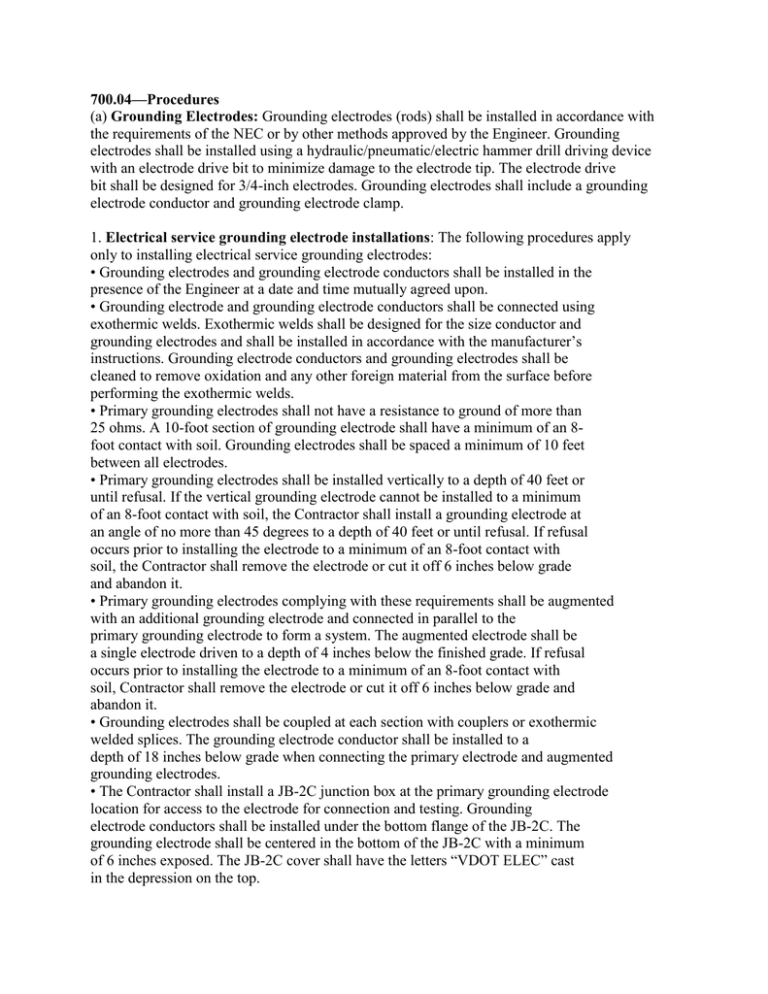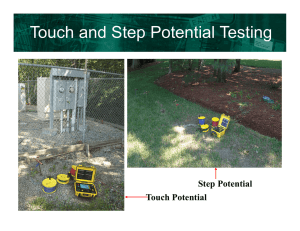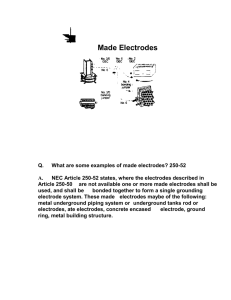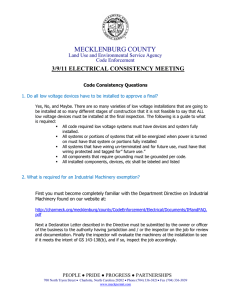Traffic Cabinet Ground Rod Specs
advertisement

700.04—Procedures (a) Grounding Electrodes: Grounding electrodes (rods) shall be installed in accordance with the requirements of the NEC or by other methods approved by the Engineer. Grounding electrodes shall be installed using a hydraulic/pneumatic/electric hammer drill driving device with an electrode drive bit to minimize damage to the electrode tip. The electrode drive bit shall be designed for 3/4-inch electrodes. Grounding electrodes shall include a grounding electrode conductor and grounding electrode clamp. 1. Electrical service grounding electrode installations: The following procedures apply only to installing electrical service grounding electrodes: • Grounding electrodes and grounding electrode conductors shall be installed in the presence of the Engineer at a date and time mutually agreed upon. • Grounding electrode and grounding electrode conductors shall be connected using exothermic welds. Exothermic welds shall be designed for the size conductor and grounding electrodes and shall be installed in accordance with the manufacturer’s instructions. Grounding electrode conductors and grounding electrodes shall be cleaned to remove oxidation and any other foreign material from the surface before performing the exothermic welds. • Primary grounding electrodes shall not have a resistance to ground of more than 25 ohms. A 10-foot section of grounding electrode shall have a minimum of an 8foot contact with soil. Grounding electrodes shall be spaced a minimum of 10 feet between all electrodes. • Primary grounding electrodes shall be installed vertically to a depth of 40 feet or until refusal. If the vertical grounding electrode cannot be installed to a minimum of an 8-foot contact with soil, the Contractor shall install a grounding electrode at an angle of no more than 45 degrees to a depth of 40 feet or until refusal. If refusal occurs prior to installing the electrode to a minimum of an 8-foot contact with soil, the Contractor shall remove the electrode or cut it off 6 inches below grade and abandon it. • Primary grounding electrodes complying with these requirements shall be augmented with an additional grounding electrode and connected in parallel to the primary grounding electrode to form a system. The augmented electrode shall be a single electrode driven to a depth of 4 inches below the finished grade. If refusal occurs prior to installing the electrode to a minimum of an 8-foot contact with soil, Contractor shall remove the electrode or cut it off 6 inches below grade and abandon it. • Grounding electrodes shall be coupled at each section with couplers or exothermic welded splices. The grounding electrode conductor shall be installed to a depth of 18 inches below grade when connecting the primary electrode and augmented grounding electrodes. • The Contractor shall install a JB-2C junction box at the primary grounding electrode location for access to the electrode for connection and testing. Grounding electrode conductors shall be installed under the bottom flange of the JB-2C. The grounding electrode shall be centered in the bottom of the JB-2C with a minimum of 6 inches exposed. The JB-2C cover shall have the letters “VDOT ELEC” cast in the depression on the top. The Contractor shall notify the Engineer of those location(s) where primary grounding electrodes do not conform to the following: • Resistance does not measure 25 ohms or less. • Grounding electrode does not have at least an 8-foot contact with soil. For such locations, the Engineer will advise the Contractor how to proceed. 2. Grounding electrode testing: Primary grounding electrodes shall be tested after each 10-foot grounding electrode and/or section thereof is installed using the fall of potential (three-point measurement) method. After the primary grounding electrode is installed and tested, the Contractor shall connect to the augmented electrode(s) to conduct a system test. The Contractor shall disconnect the grounding electrode conductor from the service equipment ground bus and bonding bushing before testing the grounding electrodes/system. The Contractor shall test the grounding electrode as required by the manufacturer’s instructions for the type of earth testing equipment. The Contractor shall record the readings on a form provided by the District Traffic Engineering Office. The completed form shall be signed and submitted to the Engineer after installation of the electrical service grounding.


